10 Best Practices on Church Management Software Implementation
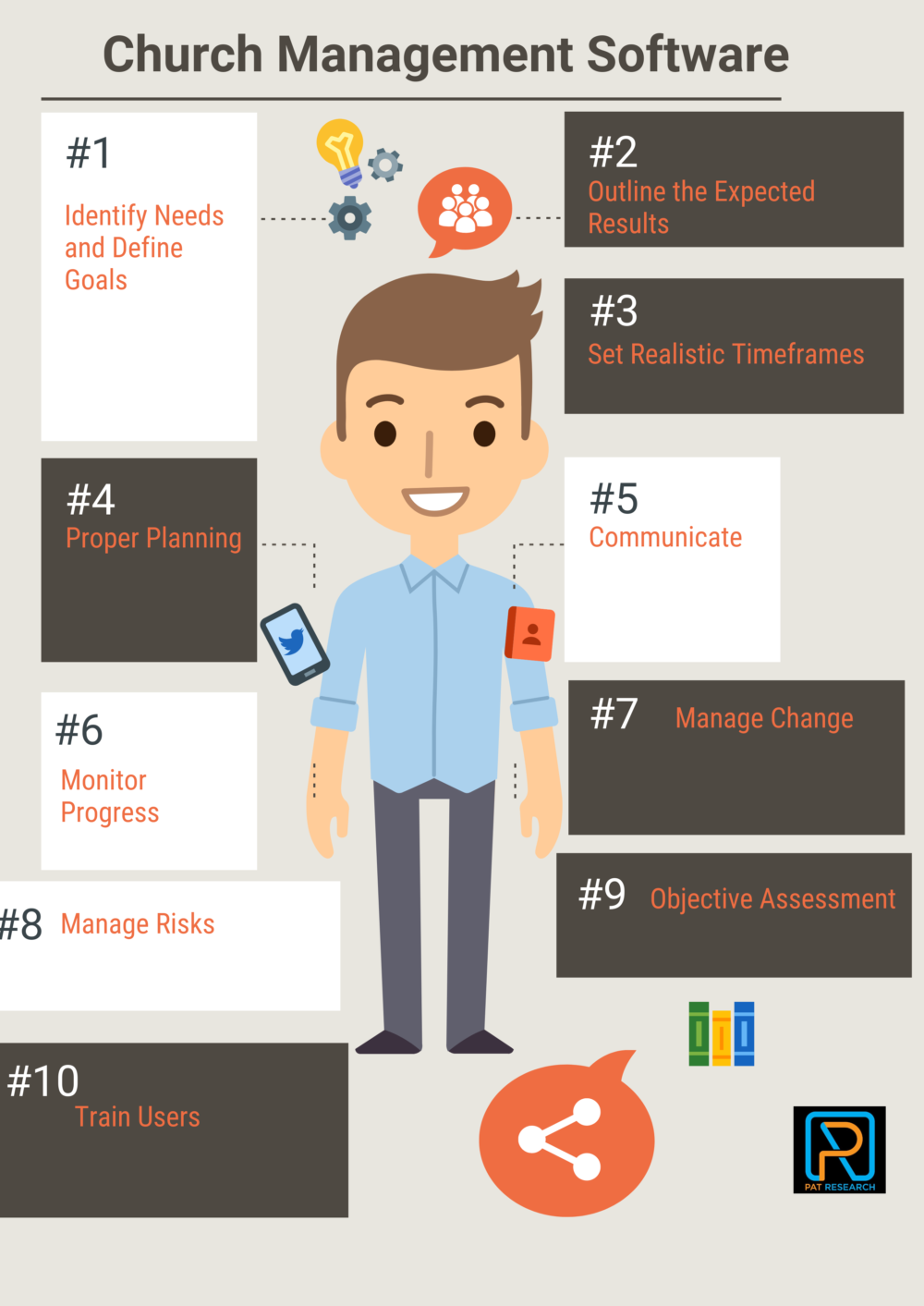
The idea of technology in the church may sound strange to some people, but every modern church needs technology in the form of hardware, software, and even the internet. Many churches are aware of the importance of technology and are using different types of technologies to carry out their daily operations.
Church Management Software is an important development in the world of technology. It refers to the type of software designed to help churches and other religious organizations manage their everyday operations. In addition to helping churches manage their activities, Church Management Software helps in the organization and automation of church activities.
The technology used to develop Church Management Software allows churches to manage their databases, communication processes, electronic messages, presentations, events, and financial records. Churches can also use this type of software to generate reports.
Modern-day churches need church management software for a number of reasons. Some of the activities that take place in a church are similar to the operations of a corporation. For example, churches perform various administrative tasks such as registering members, keeping membership records, reporting, sharing information, coordinating operations, and keeping financial records among other activities.
Church Management Software helps streamline these activities through automation. This leads to reduced costs of operation. This also includes an accounting feature that allows churches to keep accurate financial records and manage their resources. Church leaders need to communicate with other important stakeholders including church members, employees, administrators, sponsors, guests, as well as Gospel ministers.
You may like to read: Top Church Management Software
Church Management Software provides the tools needed to communicate and make it easy to spread the Gospel. In addition, churches can use Church Management Software to create presentations for events and church announcements. Churches also need Church Management Software to keep track of their members by monitoring attendance and managing contact information. Also, Church Management Software may include the tools needed to attract new members through communication platforms such as social media and email messages.
Best Practices on Church Management Software Implementation
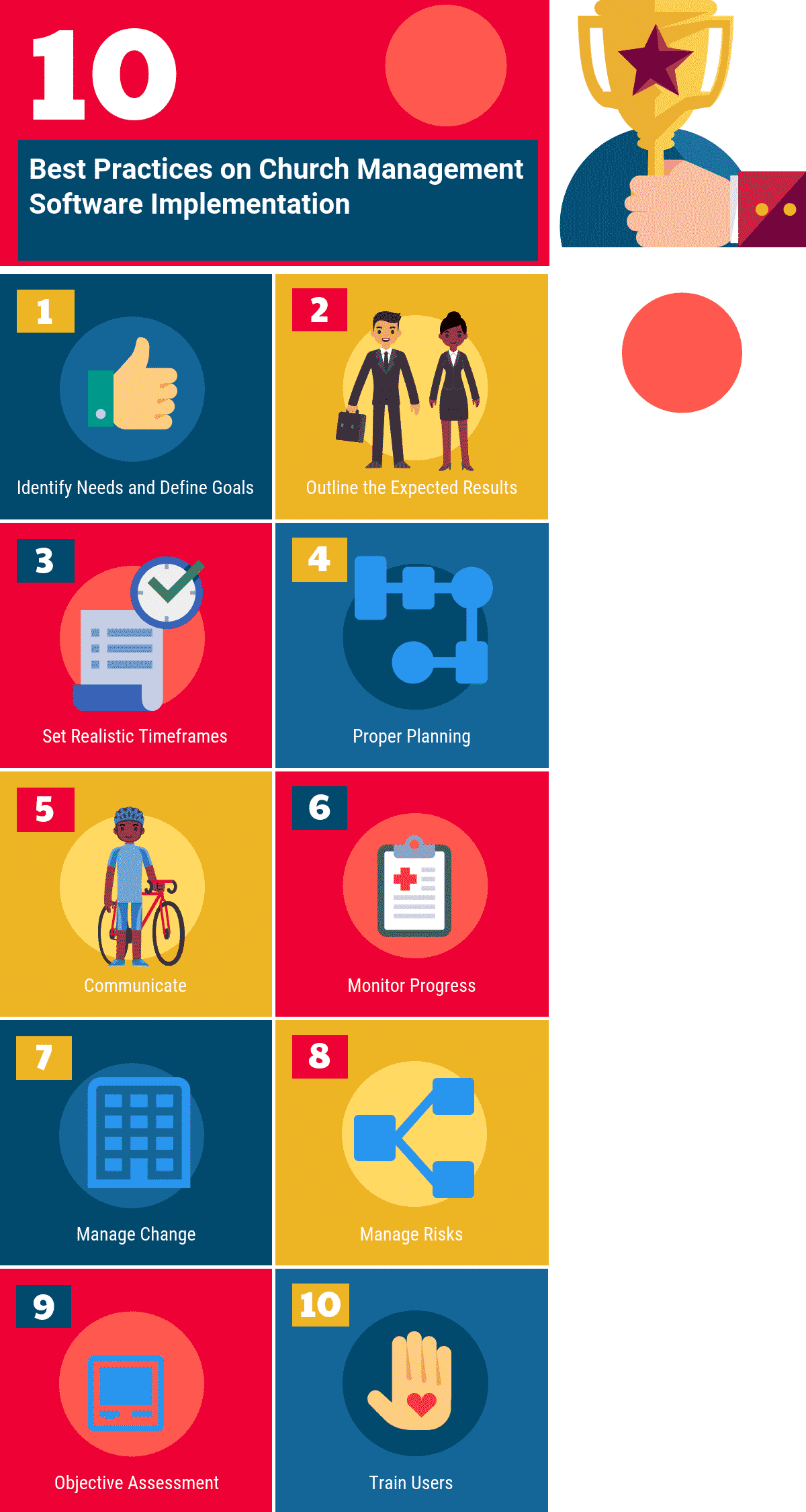
Ten Best Practices on Church Management Software Implementation
Best Practices 1- Identify Needs and Define Goals
If a church decides to use church management software, the first step is to define the scope and goals of the project. Defining the scope means identifying the boundaries and determining the activities that are part or not part of the project. You need to determine the most important features and functions depending on the needs of your church. What kind of data do you want to collect? Who are the key stakeholders? Who will manage the system? Are there any access restrictions?
This is important because it makes it possible to know the amount of work and effort needed through the implementation process. Goals refer the short-term and long-term objectives of implementing the system.
What are the key functions of the system? Do you want to store membership data, track attendance, or keep financial records? Remember to set specific, measurable, achievable, and relevant goals. The outlined goals should also align with the expectations of the church.
You may like to read: Top Church Management Software
Best Practices 2- Outline the Expected Results
It is important to outline the expected results or deliverables when implementing church management software and other systems. If one of the functions of the system is to keep track of financial data, the expected deliverable could be a spreadsheet with the financial records of the church.
You need to define the tangible (hard copy) and intangible (soft copy) deliverables. Users of the system want to know what they are expected to produce so it is necessary to provide them with enough information about the project’s deliverables. Failure to give enough information may lead to incorrect results and ineffective use of the system.
Best Practices 3- Set Realistic Timeframes
Time is one of the most important aspects of any project. There must be a well-defined timeframe with clear information about when the implementation process will begin, as well as when it is expected to end. As mentioned earlier, the goals of implementing the Church Management Software should be timely meaning the church must set a specific deadline for the project.
When do you want to start using the system? After a week, two weeks, a month, six months or one year? Is it possible to complete the milestone within the specified duration? Will you be able to achieve your goals within this period? These are some of the questions you need to ask yourself because you might waste time and money if there is no clear deadline.
Best Practices 4- Proper Planning
Once you identify the needs, set goals, and define the project’s deliverables, the next step involves planning. This begins with the appointment of a project manager. The manager should be one of the key stakeholders and the primary point of contact.
Some of the key responsibilities of the project manager include choosing the right people to implement the system, deciding which resources are needed, creating a budget for the project, and sharing information about the progress of the project.
It is also the manager’s duty to define the tasks that should be completed to produce the expected results, the amount of work and time needed to implement the system, and dependencies between the different tasks. Also, the project manager should create a plan for the entire project outlining the specific tasks, the necessary resources, the responsible people, and task completion dates.
Best Practices 5- Communicate
Everything is meaningless if there is no effective communication between the project manager, the project team, and other stakeholders. All interested parties need to know what is happening.
They need to know the overall goals of the Church Management Software, the specific duties of each team member, and the deadline for each task. Moreover, all stakeholders need to know when the project begins, the current progress, and the project’s date of completion. Members of the project team also need to know if they are on the right track to avoid undesired outcomes.
The project manager can communicate via progress reports and detailed briefings. It is also essential to communicate on a regular basis to keep everyone updated.
Best Practices 6- Monitor Progress
All stakeholders what to know what the project team has managed to achieve at any given moment. Therefore, it is important to integrate monitoring into every stage of the implementation process.
Monitoring involves auditing each milestone to ensure all the necessary resources are available, identify any problems, and create solutions to solve the identified problems.
It also involves comparing the actual outcomes with the expected outcomes. Progress monitoring is a great way of preventing scope creep (project scope becoming uncontrollable). The project might get out of scope and take a longer duration if you fail to monitor its progress.
The project team should prepare progress reports and record any variations in expenditures, schedules, and scope. This information helps the project manage make the necessary adjustments to achieve the intended goals.
Best Practices 7 - Manage Change
Change may occur without a warning so the project manager and the project team should be prepared to manage it. The project’s key stakeholders might want different deliverables rather than the ones outlined in the initial stages of the project.
This means the initial assumptions may become irrelevant and the project manager has to take the necessary action to put the project back on the right track. The manager may not accept all the proposed changes due to certain constraints such as time and budget. Therefore, it is advisable to identify the most important changes to avoid unnecessary conflicts and delays. At this point, the project manager has to make critical decisions and consult the key stakeholders if possible.
Best Practices 8- Manage Risks
Risk management involves identifying, assessing, and prioritizing risks. Risks refer to uncertain events with possible negative impacts on the project’s deliverables.
Some of the risks that might affect the implementation of a church management system include wrong time estimation, lack of resources, untimely delivery of resources (hardware and software), improper tracking of resource, scope creep, incorrect estimation of budget, conflicts, failure to perform tasks, constantly changing requirements, natural disasters, and ineffective communication.
The project manager should work with the implementation team to identify all risks, determine the possibility of each risk happening, and estimate the impact of each risk on the project. You should list and manage the identified risks. Risk management should be a regular activity to prevent project failure.
Best Practices 9- Objective Assessment
Once the system is ready for use, the project manager and the key stakeholders should carry out an assessment to ensure everything is working as expected.
The software may appear to meet the expectations of the project manager, project team, church leaders, and church members. However, the church should consider an objective assessment of the project by an outside party who is a software implementation expert. The expert will overcome any organizational roadblocks and see what the project team and the church may not see.
Best Practices 10- Train Users
Finally, someone has to operate the church management system through its user interface. Some tasks such as financial report generation may require additional training. Therefore, the church should train the person or people responsible for operating the system. Moreover, the church should obtain feedback from existing users to identify and correct problems
Here are the trending and the top rated Church Management Software for you to consider in your selection process:
You may like to read: Top Church Management Software
What is Church Management Software?
Church Management Software is an important development in the world of technology. It refers to the type of software designed to help churches and other religious organizations manage their everyday operations. In addition to helping churches manage their activities, Church Management Software helps in the organization and automation of church activities. The technology used to develop Church Management Software allows churches to manage their databases, communication processes, electronic messages, presentations, events, and financial records. Churches can also use this type of software to generate reports.
What are the Best Practices on Church Management Software?
The Best Practices on Church Management Software include Identify Needs and Define Goals, Outline the Expected Results, Set Realistic Timeframes, Proper Planning, Communicate, Monitor Progress, Manage Change, Manage Risks and many more.
You may like to read: Top Church Management Software

























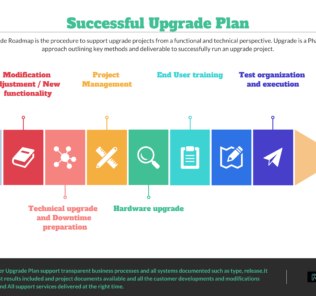

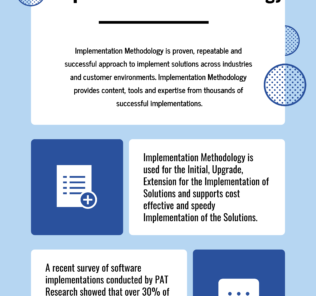
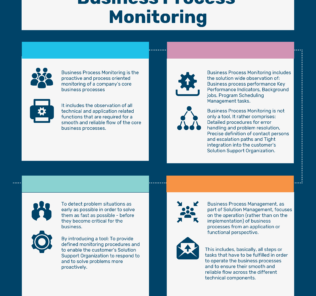




By clicking Sign In with Social Media, you agree to let PAT RESEARCH store, use and/or disclose your Social Media profile and email address in accordance with the PAT RESEARCH Privacy Policy and agree to the Terms of Use.